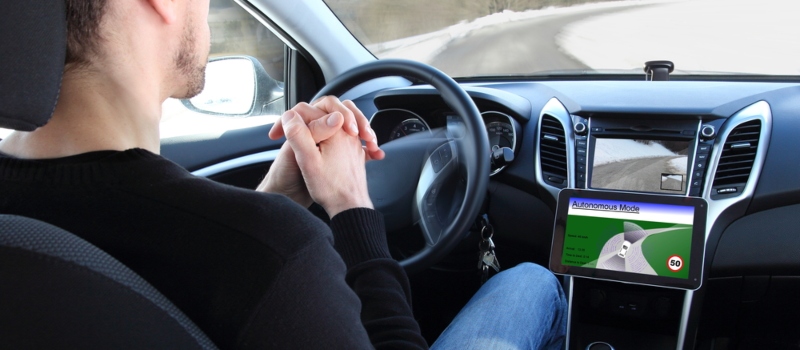
Hands free driving could be legal from Spring 2021
25th Aug, 2020
Texting while driving currently carries some stiff penalties, and rightly so, if you ask us. As things stand now, it’s usually a pretty surefire way to scrap your car in an accident. But things might well change in 2021. It all depends on the results of a new government consultation from the Department for Transport, which is beginning its review of how Automated Lane Keeping Systems might work on British roads. Here’s what’s going on.
Don’t we already have lane keeping assistance?
Yes, but these new systems would take things one step further. There’s a significant difference between current lane keeping assistance systems, and true hands-free driving. Existing lane keeping assistance technology warns drivers when they’re drifting out of lane, and can sometimes provide a bit of help to nudge them back into a central position again.
An Automated Lane Keeping System (ALKS), on the other hand, would actually control the car’s movements on behalf of the driver and keep it in lane for extended periods. Basically to a large extent it would be self-driving, but the driver still to be ready to take back control at a moment’s notice, just in case things start to go pear-shaped.
This isn’t hypothetical technology, in case you were wondering. ALK systems already exist, but what the government’s trying to find out is whether they’re truly ready to be rolled out to public highways.
If so, then it would be big news; we’d be officially moving to the next ‘level’ of self driving cars. There are five levels in total – we’ll give you a quick breakdown.
Level 0 – No Automation.
Doesn’t need a tonne of explanation, this one.
Level 1 – Driver Assistance
This covers stuff like adaptive cruise control and lane keep assistance. If you’ve bought your car within the last few years, it’s almost certain to feature Level 1 autonomy.
Level 2 – Partial Automation
This assists in controlling the speed and steering of a vehicle, and is capable of centring it in the lane. Legally, it does still require the driver’s hands on the wheel though.
Level 3 – Conditional Automation
Level 3 cars are basically capable of driving themselves, but only if certain requirements are met. For example they might only be permitted on access-divided highways, and with a strict upper speed limit. The driver’s hands can be off the wheel, but they still need to be focused and aware of what’s going on, ready to take over again.
Level 4 – Full Automation
As above, but a fully automated car doesn’t require any human intervention in most circumstances. They can operate in self-driving mode, and drivers can safely turn their attention away from the wheel for extended periods. (Feel free to open that page-turner, or even catch forty winks.) But at the moment these cars would only be able to operate within designated ‘geofenced’ areas.
Level 5 – Full Automation
The ultimate evolution of the self-driving car, otherwise known as ‘steering wheel optional’. This is where we get to true driverless cars, capable of navigating and adapting to all road conditions. They’ll also be free of geofencing, able to go anywhere.

Now, Level 1 and Level 2 already exist, and ALKS would fall under the Level 3 classification. But introducing this to public highways at large would require changes to the current legal framework, and that’s what DfT is considering doing. First though, they want input from the wider motoring industry. One specific question they’re asking is whether or not ALKS cars should be classed as automated. That means the technology designer would be liable for safety while the system is engaged, rather than the driver.
What’s been the reaction?
To be honest, it’s been mixed. The Society of Motor Manufacturers and Traders think that the automated technology will be life-changing, and could prevent as many as 47,000 serious accidents in the next decade.
Others aren’t so sure. Already there are doubts about how drivers would realistically use the system. In some ways, it’s a bit ‘hurry up and wait’. You don’t need to fully focus your attention on the road, and you can send a quick text, or make some adjustments to your Sat-Nav system.
But you can’t be distracted for too long, so you can’t really start doing anything else. Watching films, checking email, eating and reading are all out. That equates to an awful lot of time spent simply staring at the road ahead, minus the agency of actually controlling your progress along it. Right now, it’s difficult to see how it’s going to make long motorway journeys any less tedious!
Then again, we’re not experts in advanced car tech or legislation, so personally here at Scrap Car Network we’ll be happy enough just to see how the consultation progresses, and what decisions are ultimately made. We’ll tell you what we are experts in, though – and that’s getting you the best price when you scrap your car with us. It only takes 10 seconds to find out how much your car is worth – just enter your car reg and postcode into the fields on our site, and we’ll get you your very own instant scrap car quote!